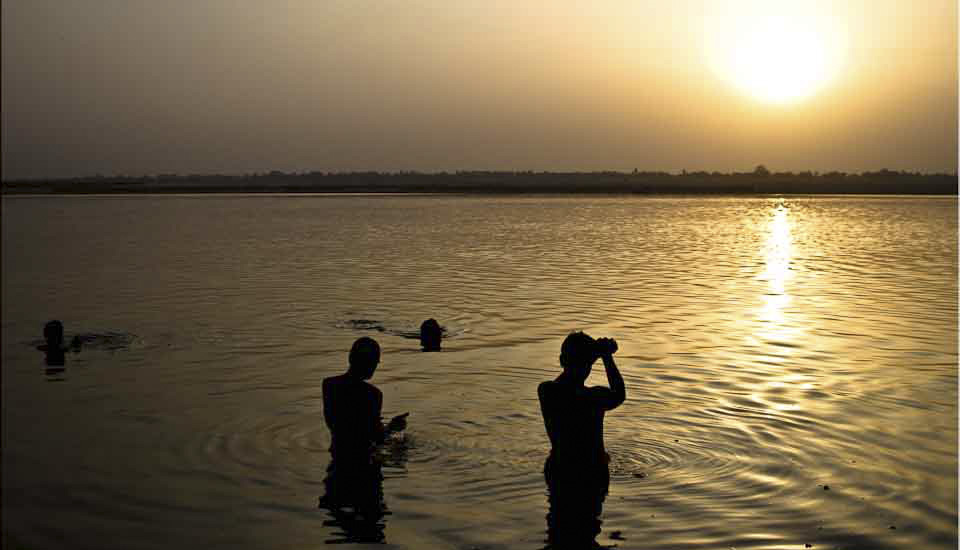.jpg)
Building Details
Ornately carved wood and overhanging balconies: the architecture in the historic and UNESCO-listed city of Meknes in Northern Morocco is a blend of Islamic and European styles from the 17th century and older.
Colour and pattern is everywhere!
Tiled walls and fountains are around each corner and intricate wood, brass, and plaster work decorate every building in old Meknes.
Founded in the 11th century under the Almoravid Berber dynasty, Meknes is one of Morocco’s four Imperial Cities: that is, it was once the capital of the country, and continues to house a royal palace. UNESCO-listed for its historic architectural interest and its approach to urban design and town planning, the narrow, winding streets of the medina (the old city) contrast with the massive ramparts and huge monumental gates that are the mark of its historic defensive origins.
I was travelling with a small group. We had driven to Meknes the day before from Casablanca, with a stop at Rabat, the current capital and one of the other Imperial Cities (see: Imperial City and Capital of Morocco). Our overnight accommodation was in a old charming riad – a traditional multi-storied house built around an inner courtyard with a fountain below and a colourful skylight above.
After a very early breakfast, we were out the door with our walking shoes on and our bags packed and ready for the bus. We met with a local guide who took us through some of the main attractions in the old city. I was very grateful to her: without a guide, I might have never made it back out of the medina!
I’ve forgotten most of the dates and details: so enjoy the visuals as you join me for a morning walk through old Meknes.
.jpg)
Ornamental Facade Overhead
As soon as we enter the medina, we are surrounded by intricate architectural details, like this carved and painted wood and plaster.
.jpg)
Ornate Tiled Fountain
Sultan Moulay Ismaïl (reigned 1672–1727) oversaw the construction of grand palaces, public buildings, and sophisticated water systems. Some of the existing fountains date back that far, although most are from the 18th and 19th centuries.

Under-Cover Corridor
Walkways wind in every direction. The UNESCO documents note the need for restoration or conservation measures in many areas.

In the Medieval Streets
Unlike the medinas of some of Morocco’s bigger cities, old Meknes is not aimed at tourists: it is very much a site where daily life goes on.

A Local Guide and a Local Shop
At a clothing store, our guide explains the difference between the every-day djellabas and special-occasion caftans that women wear.

Another Door and Another Fountain

Our Guide

Another Beautiful Public Fountain
The repeated tiled patterns are quite beautiful – but they send my head spinning!

Ornate Ceiling Detail
Even the roof overhanging the fountain is decorated in intricate geometric patterns and flowing arabesques typical of Islamic art.

Blue Mosaic Wall Art at the Dar Jamai Palace
Our walk brings us to a large open square, Place el-Hedim, where we stop to admire the beautifully tiled fountain on the outside wall of the Dar Jamai Museum. The palace that now houses the museum was built in 1882.

Bab el-Mansour or Bab Mansur
At the opposite end of Place el-Hedim – which was built between 1672-1674 after Sultan Moulay Ismail demolished half of the city of Meknes for his palace – we come to a historic monumental gate. The Mansour Gate was built in 1732 by Mulay Abdullah, the son of Sultan Moulay Ismail. It is currently undergoing renovation and what we are looking at is a giant photograph!

Pillar and Repairs
Behind the giant photo, I get a glimpse of the scaffolding, and one of the elegant pillars it encircles.

Old Alleyways
We enter the walled area through more modest gates and winding tunnels.

Pigeons in the Wall
Pigeons roost the depressions in the giant walls which once held scaffolding.

Arched Gateway
The interior of the ancient imperial city comprises vast open spaces.

Pony Cart
Small pony carts wait to transport passengers.

Mausoleum of Moulay Ismail
A short walk from the gate, we come to the funerary complex of the sultan who first made Meknes his capital.

Brass Door Knockers
The huge carved wooden doors to mausoleum are decorated with traditional Moroccan door knockers.

Inside the Mausoleum
The mausoleum complex winds off into various courtyards and chambers; the patterned tiles everywhere played havoc with my astigmatism.

A Prayer

Brass Chandelier
Richly decorated indoor patios flank the tomb chamber at the centre of the mausoleum.

Another Brass Chandelier

The Tomb Chamber
This square central chamber holds the mqabriyas – tombstones – of Sultan Moulay Ismail (c. 1645–1727), his son and successor Ahmad ad-Dhahabi (1677 – 1729), and the later sultan Moulay Abd ar-Rahman ibn Hisham (1778 –1859).
The historical fiction I’ve read (see: The Sultan’s Wife) and Wikipedia agree that Moulay Ismail left behind a mixed legacy. He was known for his military successes and his ruthless – often cruel – governance. Although he is credited with unifying Morocco, his death was followed by civil wars and instability.
 But, the architectural grandeur he left behind is indeed a testament to Meknes’ start as a magnificent imperial capital.
But, the architectural grandeur he left behind is indeed a testament to Meknes’ start as a magnificent imperial capital.
Pictures: 15October2024



























.png)

